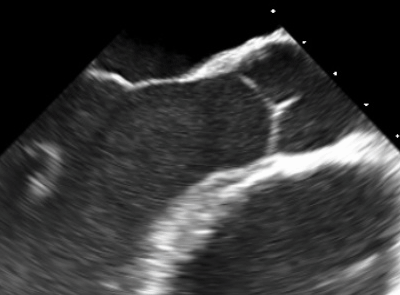
Heart valves and valve problems
There are 4 important valves in the heart. These valves are like doors which allow blood to flow in one direction only, like a one-way street (figure 1). Heart valve problems arise when the valves either do not open completely or leak the blood backwards.

The left two chambers of the heart have two valves- mitral and aortic valves. Mitral valve connects the upper left to the lower left chamber. The left lower chamber or the left ventricle has an important function to pump the blood forward to the body. The aortic valve is placed right at this outlet, like a tap to the heart pump. It prevents the blood from leaking back to the heart after it has been pumped forward.
The right two valves are similarly placed- tricuspid valve between the right upper and lower chambers and a pulmonic valve at the outlet of the right lower chamber. The right lower chamber or right ventricle serves to pump the blood to the lungs where it gets oxygenated. The oxygenated blood then returns to the left chambers to be pumped to the body. The cycle repeats with each heart-beat. This is explained in detail in the anatomy section.
The valves are made of thin but strong flaps of tissue (figure 2). When heard through a stethoscope, the closure of normal valves result in clean clicking sounds. A leakage through the valves or a tight valve results in a whooshing or whistling sound called a murmur.

Functioning of the valves:
A single heartbeat has two components- first squeeze and then relaxation of the lower chambers. This repeats like clock-work. When the lower chambers relax, the mitral and tricuspid valves open and allow the blood to flow from upper to the lower chambers. When the lower chambers squeeze, the mitral and tricuspid valves close, thus preventing blood from back flowing into the upper chambers. At the same time, the aortic and pulmonic valves open to allow the blood to be pumped out. The cycle repeats, the lower chambers relax, aortic and pulmonic valves close and mitral/tricuspid valves open.
Problems with the heart valves:
Valves could be malformed by birth or damaged during life. The valves could leak the blood backwards or may not open as widely as normal. Either heart valve problems could put a strain on the heart. A leaky valve is called ‘regurgitation’ and a tight valve is called ‘stenosis’.

One of the consequences of valve damage is heart failure, where excessive strain tires out the heart. A leaky valve makes a squeeze ineffective as the blood pumped forward leaks back and must be pumped forward again. A tight valve increases the workload as the heart must pump blood against a closing door, which is an uphill task (figure 4).

Treatment of valve conditions:
Majority of the valve problems are monitored for worsening with regularly performed echo. An echo is the ultrasound of the heart which can visualize the heart structure. If the valve problems appear severe or there are signs of heart damage, then some corrective measures are recommended.
Corrective measures are usually in the form of repair or replacement of the valve. Most valve procedures are performed through open-heart surgery. Some minimally-invasive catheter delivered valve procedures are being developed. One such procedure is TAVR for aortic stenosis. Read more about this in the aortic stenosis section.
Follow on twitter.
All opinions expressed here are those of the author and not of the employer. Information provided here is for medical education only. It is not intended as and does not substitute for medical advice.